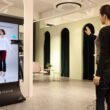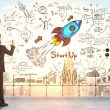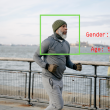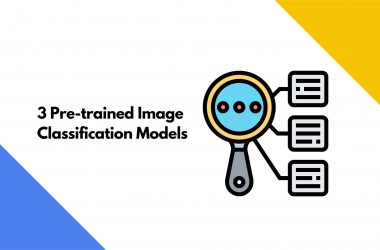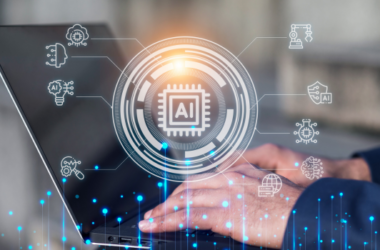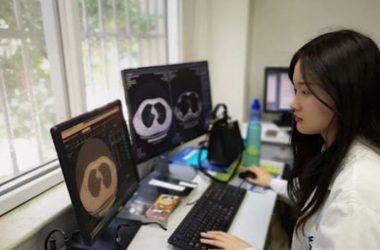Executive Summary:
At first look, fashion—which is primarily influenced by art, intuition, and creativity—seems an unlikely match for a technological innovation like artificial intelligence, driven by science, logic, and analysis. The fashion industry, however, has a lot to gain from AI because of the massive data sets regarding prior fashion trends, maximizing sales, market volatility, and consumer preferences. So let’s look at how artificial intelligence quickly alters the fashion industry.
Introduction:
Most people were raised believing that artificial intelligence only existed in fiction. As it turns out, artificial intelligence is real and more helpful than ever imagined. In everyday work, especially in the fashion sector, humans make mistakes. The manufacturing department may become frustrated and disappointed if we lose a stitch or two in the sewing room or cut the fabric incorrectly. We must start over on an outfit that has already taken days to make. AI can be helpful in this case. A new relationship between fashion and artificial intelligence will undoubtedly be successful for many years.
How AI is applied in the fashion Industry:
Here are some examples of how AI is being used in the fashion industry:
Forecasting Supply and Demand
Huge amounts of unsold apparel are being held by companies like H&M, which will cost them money. This occurs due to brands’ current emphasis on a mass-producing dress in line with the newest trends, which are quickly replaced by new ones, resulting in the creation of more new clothing. This results in significant financial implications for brands and waste as well.
Today, brands use AI to forecast sales based on characteristics like trends, product type, color, price, and range. As there is less money wasted, this helps brands reduce the surplus product and improve income. However, because of clever demand prediction, returns are also decreased.
Merchandizing
Previously, you would select a pair of shoes or clothing based on your gut feeling and the product’s prior customer ratings. But today, dynamic factors like emerging industry trends affect most purchasing decisions.
In addition to predictive analytics, AI in the fashion sector enables firms to anticipate fashion trends and gives you the advantage by proposing products you like that are displayed at the ideal time when browsing for the season’s most trendy items.
AI also monitors dynamic trends and product performance using real-time data analytics. As a result, it greatly aids the marketing team’s adoption of a proactive strategy to satisfy client requests and maintain relevance in the fashion industry.
Designing
The key to designing a costume that appeals to buyers is using patterns and designs in the appropriate color combinations. AI can identify emerging trends and project them while lowering forecasting errors.
New styles and patterns hit the market every day, which causes fashion trends to shift quickly. Designers must stay on top of emerging trends. AI algorithms can also mimic popular styles while analyzing designs through photographs. Following an analysis of the designer clothing data set, AI analyses this information to determine what products sell well and what do not. Then, it suggests to designers what they should produce and advertise.
Cloth Detection:
One of the key uses of AI and computer vision technology to create effective recommendation systems is clothing detection services. Leading fashion businesses are bridging the GAP between online and in-store buying by combining image processing techniques with augmented reality (AR) and virtual reality (VR). Sorting and Cloth detection services can be challenging and require time and effort. Most warehouses employ workers for you, but they can only work sometimes. It is also expensive and inefficient. However, the models and Cloth detection services can be trained to recognize objects appearing in social media, fashion, and other contexts.
Inventory audits and replenishment
An in-store inventory tracking camera keeps an eye on malls and retail establishments. They can alert the manufacturer of the shortage automatically. The work is designed in such a way that they scan data to validate whether the same product is lying in another store and being sold so that it can be brought to another store, making it even more efficient. This decreases industrial waste and results in cost savings.
Competitor Research
When you own a brand, you want to dominate your sector. And if you deliver the right product at the appropriate pricing, it might be doable. Likewise, if you provide the same goods at a comparatively lower price, customers will be more likely to purchase from you.
Accurate data could aid you in making intelligent company decisions regardless of your work sector. In addition, you’ll better understand what measures to take next by being informed about AI in the fashion Industry and evaluating yourself against other designers who share your viewpoints.
With AI, you can predict client demand and identify trends in the data, giving you a distinct competitive advantage. With artificial intelligence, these observations might be seen.
Conclusion:
Many innovations like Cloth detection services will soon hit the fashion and technology industries. Everyone desires the best-fitting, most fashionable clothing for themselves. So artificial intelligence is improving everything from stores to factories in the garment sector.
The fashion market is predicted to increase with AI at a CAGR of +40% during the following seven years (2020–2027); fashion has an intelligent future. AI helps brands create new looks and designs that you are more likely to like by accurately forecasting the next fashion trends. AI also determines your fashion preferences, which makes you content and pleased.
Since humans created AI, it should be seen as an addition to human creativity rather than a replacement. The result is a more streamlined, environmentally friendly, and competitively advantageous apparel sector.

